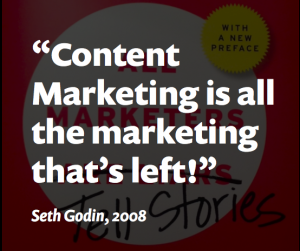The top four digital priorities for 2016 among companies, according to the EConsultancy Quarterly Digital Intelligence Briefing: 2016 Digital Trends report, are targeting and personalization, content optimization, social media engagement and multi-campaign management. Among these priorities, there is one point of focus: customer experience. The element that joins them all together: data.
The value of data is increasing exponentially, as it is proven to create a competitive advantage and become a crucial element of decision-making. While data currently has value in demonstrating what happened for a given campaign and sales effort, the goal is ultimately to increase the value of data from the “what” to the “why,” “when” and “how.”
For most companies, data via raw numbers and standard and ad hoc reports are used to report what happened with a campaign or marketing effort. It’s valuable when optimizing future campaigns and creative and making long-term decisions based on trends. Once data is analyzed, there is a level of business intelligence that comes into play and knowledge about “why” something happened can influence decisions. Next, the goal is to develop predictive models that can help determine what is likely to happen. Lastly, the ultimate goal is to develop prescriptive models to provide insight on how to make it happen. These stages help a marketing organization start with data and end with action on the part of the customer.
These stages are essential in addressing the four priorities mentioned above. If we look at personalization as an example, data can help marketing evolve from the basic personalization of adding a “Hello, Bob” or “Welcome, Amy” to a Web page based on data from a form to delivering content in real-time based on a customer’s actions, previous websites visits and other interactions. When this happens, new content can be served based on the path the customer takes, providing information that is most relevant at the customer’s current decision-making stage.
But getting to that point is tough. And allowing data to drive digital marketing is not without its challenges. The sheer volume of data generated can be overwhelming and create obstacles to using it effectively. At the same time, internal challenges also can thwart success and efficacy. Let’s review a few of the potential challenges:
- Time
According to Accenture and Peerview Data, “not enough time” was one of the top two issues sited when companies were asked what their challenges were with data analysis (Cost was the other.) With data coming from multiple sources, the ability to review, analyze and then make actionable decisions quickly is critical to having a competitive edge. Data integration can be a solution to help offset the time crunch. Integration quickly visualizes data from multiple sources to assists with making decisions. For companies that do not have large technology budgets, there are low-cost tools available such as Tap Analytics.
- Processes and cultural change
With digital marketing, collaboration is essential to a campaign’s success. But all too often, distance between the data organization and marketing communications creates siloes that make it difficult to leverage the analysis generated and use it for campaign promotion and support. Analysts and marketers need to work together to make real-time decisions and generate effective campaigns. C-suite approval and support also is critical to the success of using data as one of the main drivers for marketing. The idea that roles and thought processes have to change comes from the top down. Flexibility is another cultural change. Decisions need to be made faster, content is needed faster and more abundantly to support trends and user behavior, and people need to be willing to change direction quickly based on what customers want. For many large organizations, change can be difficult, but it’s essential for long-term success.
- The right people
Really looking at your organization and making sure you have the right people to drive and leverage opportunities are important. Marketing roles need to change as the people that occupy these jobs need to become proficient in data – understanding what it means and how to use it. Jim Terry recently wrote a blog about human expertise in the world of automation that touches on the importance of the human role in using tools and the data that comes from them. These changes are leading companies to hire more data analysts, data scientists and marketing people that have a background in analytics, in addition to establishing new senior roles, such as chief marketing technologist – a role that combines data analytics, business intelligence and marketing. Often the ability to hire for these roles is much harder than it sounds, so companies are becoming more open to outside help. According to research from the CMO Council and Ebiquity, nearly three-fourths of marketers plan to seek outside help to deal with their data needs.
So what kind of results should you expect if you embrace data as a key driver of your digital marketing efforts? According to Bain & Co. and Salesforce, companies that use analytics are two times more likely to have top-quartile performance, five times more likely to make faster decisions and eight times more likely to improve operational outcomes. These results are clearly desirable for any company, but getting infrastructure, people and processes in place to really reach them is the hard part before data can truly be the panacea that we are all looking for.
As one of our digital campaign team’s favorite topics, we would love to discuss it more with you. Let us know what stage you are at and the value you see data providing. We can take it from there.
Previously published on The M/C/C Minute.
Digital & Social Articles on Business 2 Community(21)







